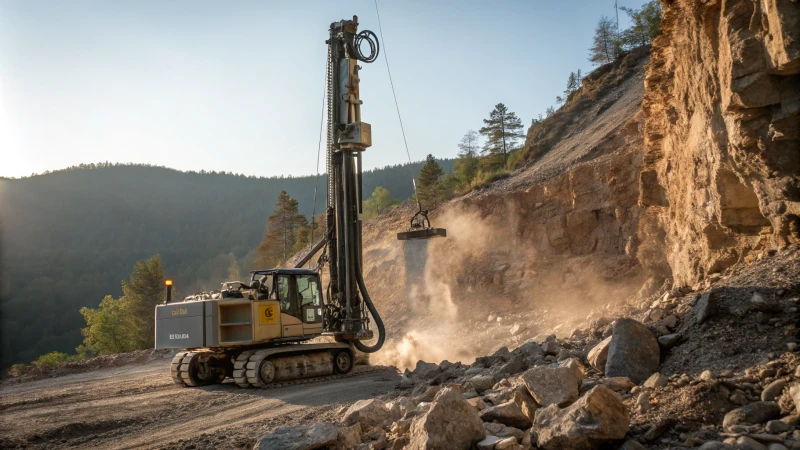Ever found yourself wondering why your drilling project is dragging on and costs are piling up?
When drilling with DTH bits, underfeeding can lead to poor efficiency, increased wear, shoddy hole quality, and spiraling costs. It's the result of not applying enough pressure, which slows down progress and risks equipment damage.
Think of underfeeding like trying to carve a turkey with a butter knife—inefficient and frustrating. While it might seem like a small hiccup, over time, it can really derail your operations. Let’s dig into why this matters and how you can steer clear of these pitfalls.
Underfeeding increases DTH bit wear.True
Insufficient pressure causes more friction, accelerating wear.
Underfeeding improves drilling efficiency.False
Lack of pressure reduces bit effectiveness, slowing progress.
How Does Underfeeding Affect Drilling Efficiency?
Ever wonder why your drill isn’t performing as expected? Let me tell you, underfeeding might be the culprit.
Underfeeding in drilling reduces penetration rates, wears out bits faster, and leads to poor hole quality. Adequate feed force is key for effective rock breakage, lowering costs, and boosting efficiency.
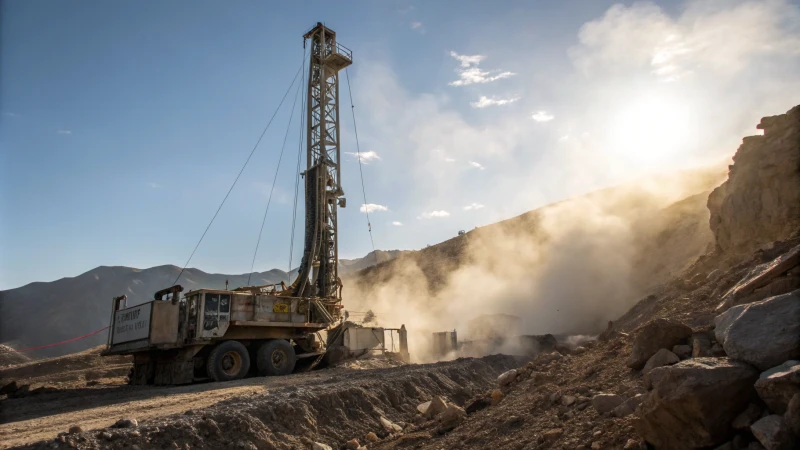
Inefficient Rock Breakage
Let me share a story from my early days in the field. Picture this: a brand-new drill bit and an eager team, only to find that the drill barely makes a dent. We realized the feed force was lacking. It felt like trying to hammer a nail with a marshmallow. The result? A sluggish rate of penetration (ROP) that had us watching the clock and our budget slip away. Inefficient rock fracturing not only slows progress but also guzzles fuel consumption1 like there's no tomorrow.
Increased Bit Wear
I remember vividly how we once ignored the signs of underfeeding, thinking it was a minor issue. Boy, were we wrong! The bit started bouncing and rubbing against the rock, wearing out in weird patterns. It was like watching my tires get shredded on a gravel road. This irregular wear led to premature failure2, and before I knew it, we were burning through our bit inventory faster than expected.
| Factor | Effect |
|---|---|
| Feed Force | Irregular wear patterns |
| Bit Longevity | Decreased lifespan |
Poor Hole Quality
One particular project comes to mind where the bit began to wander off its intended path due to insufficient feed force. Imagine trying to draw a straight line with a shaky hand—that’s what our borehole looked like. This deviation wasn’t just an eyesore; it affected the precision needed for blasting stages, complicating everything downstream by causing hole deviation3.
Decreased Bit Penetration Rate
Underfeeding slows down operations to a crawl. I’ve seen projects extended unnecessarily because the drill just couldn’t bite into the rock effectively. This not only dragged our timelines but also inflated our fuel bills, impacting project timelines4. Trust me, the frustration of watching deadlines loom while costs rise is something I wouldn’t wish on anyone.
Increased Operational Costs
Picture this: extended drilling times meant more fuel consumption and frequent bit swaps. Our operational costs shot through the roof, much like filling up a gas tank every few miles on a road trip—painful and unsustainable due to higher resource consumption5.
Compromised Safety
We learned the hard way that underfeeding could stress components to their breaking point. Once, our drill bit started bouncing uncontrollably, posing risks not only to our equipment but also to the safety of our team. It was a wake-up call that underscored the importance of maintaining consistent engagement with rock to minimize equipment failure risks6.
Underfeeding reduces the rate of penetration in drilling.True
Underfeeding causes inefficient hammering, reducing the rate of penetration.
Adequate feed pressure increases bit wear and tear.False
Insufficient feed pressure, not adequate, leads to irregular bit wear.
What Impact Does Underfeeding Have on Bit Wear?
Imagine you've just embarked on a drilling project, and your bit seems to be wearing out faster than expected. Could underfeeding be the culprit?
Underfeeding in drilling leads to uneven bit wear and premature failure, as insufficient feed force causes improper rock engagement and increased stress on drill bits.
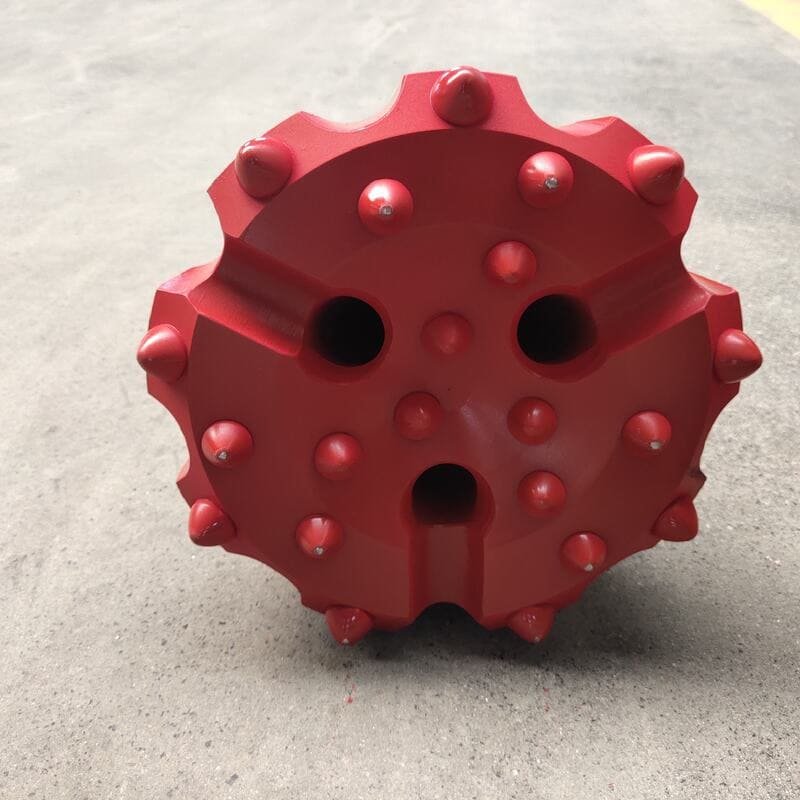
Understanding Underfeeding in Drilling
I remember my first major drilling project—exciting, challenging, and full of learning moments. One of those lessons was about underfeeding, an issue that crept up silently but left a significant impact. Underfeeding happens when the applied feed force isn't enough for effective drilling. It's like trying to dig into a hard cake with a plastic spoon; without enough pressure, the bit can't maintain proper contact with the rock surface, leading to several issues:
-
Irregular Bit Wear: I once noticed how the drill bit bounced and chattered against the rock, much like an excited puppy skidding on a hardwood floor. This erratic motion results in uneven wear patterns, where some parts of the bit endure more stress than others, leading to accelerated deterioration and premature bit failure7.
-
Reduced Drilling Efficiency: Without sufficient force, the bit struggles to fracture rock efficiently. It's like trying to slice through a tough steak with a butter knife—slow and frustrating. This results in slower penetration rates and extended drilling times, ultimately increasing operational costs.
Factors Contributing to Bit Wear
Several factors exacerbate bit wear when underfeeding is present:
| Factor | Impact |
|---|---|
| Insufficient Feed | Leads to bouncing and irregular contact with rock surfaces |
| Rock Hardness | Harder rock requires more force, making underfeeding more detrimental |
| Bit Design | Certain designs may be more prone to wear under low-pressure conditions |
Recognizing these factors allows me to adjust feed rates and choose appropriate bit designs for specific conditions.
Strategies to Mitigate Underfeeding Effects
To reduce the negative impacts of underfeeding on bit wear, I've found these strategies invaluable:
- Regular Monitoring: Continuously monitor feed pressure and adjust as needed to maintain optimal contact with the rock.
- Bit Selection: Choose bits designed for the specific geological conditions being drilled. Some designs are more resistant to wear under low-pressure situations.
- Operator Training: Equip operators with knowledge on efficient drilling practices8 to prevent underfeeding and maximize equipment lifespan.
These strategies not only minimize wear but also enhance overall drilling efficiency by ensuring that bits operate under optimal conditions.
Real-World Applications and Considerations
In practical applications, understanding the relationship between feed force and bit wear can lead to significant cost savings. For instance, in large-scale mining operations, even a slight improvement in bit longevity can translate into substantial financial benefits.
Operators need to consider various environmental and technical factors when selecting bits and setting feed pressures. For example, adaptive drilling technologies9 that adjust feed rates based on real-time data can offer a sophisticated solution to manage bit wear effectively.
By addressing underfeeding proactively, companies can reduce unexpected downtimes and enhance project timelines, leading to improved productivity and profitability across drilling operations.
Underfeeding leads to irregular bit wear.True
Insufficient feed force causes bits to bounce, leading to uneven wear.
Harder rocks require less feed force during drilling.False
Harder rocks need more force, making underfeeding more harmful.
Can Underfeeding Lead to Poor Hole Quality?
I once underestimated the importance of feed force while drilling, and it was a hard lesson learned.
Yes, underfeeding can lead to poor hole quality by causing deviations and rough walls. Ensuring adequate feed force is essential for maintaining straight and smooth boreholes.

The Mechanics of Underfeeding
Let me take you back to a project where I learned firsthand about the perils of underfeeding during drilling operations. It was a chilly morning, and we were eager to get started, but in my haste, I failed to apply sufficient feed force. The drill bit wobbled and strayed off course, and instead of a neat borehole, we ended up with something that resembled a zigzag pattern. It was a tough situation.
- Increased Hole Deviation: Just like my mishap, when there's not enough force, the bit can drift off course, especially in challenging rock formations. This deviation can turn your plans upside down, complicating future phases of construction.
- Rough Hole Walls: Imagine trying to drill through a piece of wood but only pressing lightly—the drill keeps bouncing back without making much progress. The same thing happens with insufficient pressure on the drill bit, leading to uneven and jagged walls that are far from ideal for most applications.
Consequences on Drill Bit Performance
The aftermath of my oversight didn't stop at the hole's appearance. The drill bit itself took a beating.
- Accelerated Bit Wear: The lack of consistent pressure led to an uneven grind against the rock. It was like watching a tire wear out prematurely because it wasn't aligned properly. Not only did it cost us time but also money, as we had to replace the bit sooner than expected.
| Issue | Cause | Effect |
|---|---|---|
| Hole Deviation | Insufficient feed force | Off-target borehole |
| Rough Walls | Repeated ineffective hammering | Uneven borehole surface |
| Accelerated Bit Wear | Irregular contact with rock | Increased replacement frequency |
Operational Challenges and Costs
The financial implications were another wake-up call.
- Increased Operational Costs: Our timelines stretched as drilling slowed, gobbling up more fuel and resources. It was a reminder that what seems like a small miscalculation can inflate budgets significantly.
- Safety Concerns: This experience made me acutely aware of the risks involved. An unpredictable bit isn't just an inconvenience; it's a hazard waiting to happen. Ensuring optimal feed force is not just about efficiency—it's about keeping everyone safe.
For those interested in delving deeper into strategies for enhancing drilling efficiency10 or understanding drill bit wear11, I highly recommend seeking expert advice and exploring further resources.
Optimizing Drilling Practices
From that day forward, I made it my mission to avoid such pitfalls. Regular checks on drilling parameters became second nature, ensuring we always hit that sweet spot of optimal feed force. It’s incredible how much smoother everything runs when you keep a close eye on these details. For more insights into feed force optimization12, case studies and expert guidelines can offer valuable lessons.
Underfeeding increases hole deviation in drilling.True
Insufficient feed force allows the drill bit to drift off trajectory.
Adequate feed force causes rough hole walls.False
Adequate force ensures smooth advancement, preventing rough walls.
Why Does Underfeeding Increase Operational Costs?
I once thought skimping on feeding might save a few bucks, but boy, was I wrong! Turns out, underfeeding can actually skyrocket costs.
Underfeeding boosts operational costs by cutting drilling efficiency, speeding up bit wear, and triggering equipment issues. These problems mean more drilling time, extra fuel use, and frequent replacements.
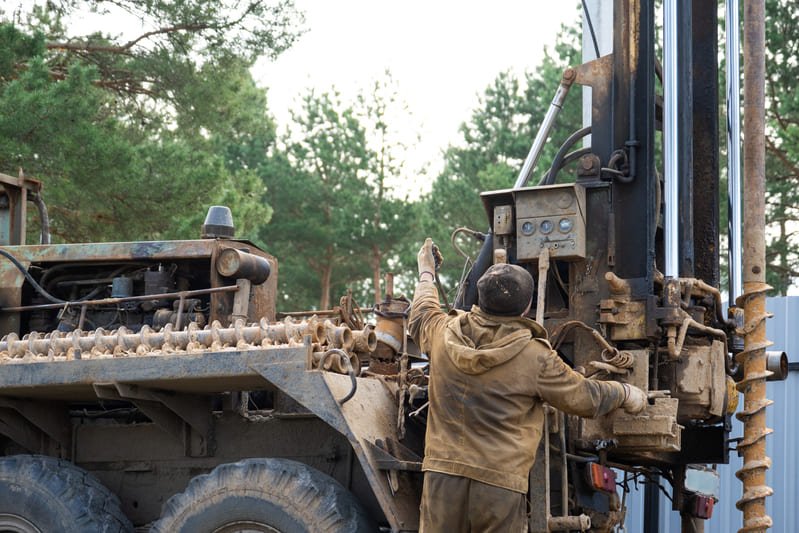
The Impact on Drilling Efficiency
Imagine trying to drill through rock with a dull pencil; that's what underfeeding does to your drill. It's like watching paint dry as the penetration rate drops, making the whole process drag on and on. I remember one project where we were behind schedule because the drill just wouldn't bite into the rock efficiently. This not only wasted precious time but also guzzled more fuel than we budgeted for. Over time, these delays snowballed into massive cost overruns that no one saw coming.
Accelerated Bit Wear and Replacement
I still recall the day we first noticed uneven wear on our drill bits. It was like wearing shoes that pinched in all the wrong places—awkward and uncomfortable. Underfeeding leads to these irregular wear patterns, causing parts of the bit to take more stress than others. In no time, we were replacing bits more frequently than we liked.
| Impact | Description |
|---|---|
| Irregular Wear | Causes uneven stress on drill bits |
| Premature Failure | Accelerates bit deterioration |
Each swap wasn't just a blow to our material costs; it meant downtime, lost productivity, and a crew sitting idle waiting for replacements.
Equipment Malfunctions and Maintenance
Continuous underfeeding doesn't just wear out the bits; it sends shockwaves through the entire system. I remember when one of our rigs broke down in the middle of nowhere. The culprit? Unpredictable bit behavior led to increased stress on our drill strings and components. This meant emergency repairs that weren't in the budget and maintenance schedules that had to be rewritten on the fly. Regular equipment checks13 became our new normal to avoid such hiccups.
Potential Delays in Project Completion
All these inefficiencies eventually hit us where it hurts most—project timelines. When you're running late, every tick of the clock feels like a countdown to impending doom. We faced potential penalties, and bringing in extra hands to catch up only inflated our costs further. Understanding the right feed force14 became crucial for us to keep projects on track and budgets intact.
By diving into these issues, I realized how underfeeding wasn't saving us money; it was quite the opposite. Our solution lay in optimizing feed force and ensuring every piece of equipment was up to the geological challenge it faced.
Underfeeding reduces drilling efficiency.True
Insufficient feed force slows penetration rate, increasing rig time.
Underfeeding decreases bit replacement frequency.False
Uneven pressure causes premature wear, leading to more replacements.
Is Safety Compromised by Underfeeding During Drilling?
You know, the last time I was drilling, I realized something crucial: underfeeding doesn’t just slow us down—it puts everyone at risk.
Underfeeding during drilling can seriously compromise safety by making equipment more prone to damage and causing erratic bit behavior, which can lead to accidents or injuries.
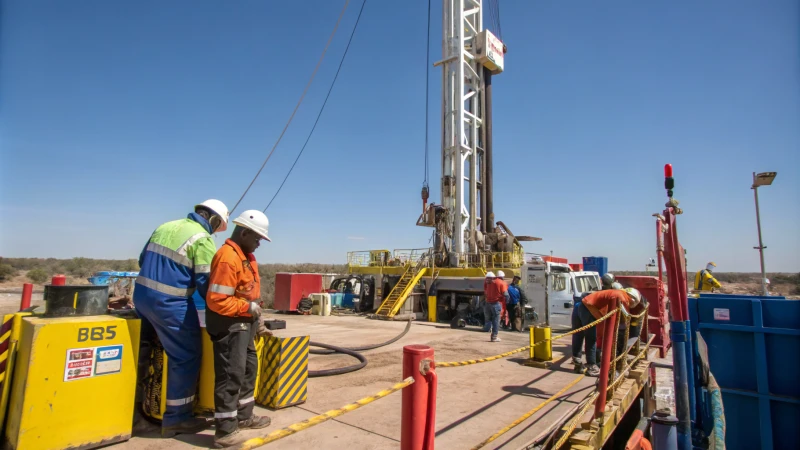
Impact on Equipment Integrity
I once had a drilling operation where we underestimated the feed pressure needed. We thought we were saving resources, but the drill bits started wearing out irregularly. They were stressed in ways we didn't anticipate, leading to a sudden breakdown that halted everything. This increased stress15 on the drill string taught me that saving on feed pressure wasn't worth the risk.
| Consequence | Impact |
|---|---|
| Irregular Bit Wear | Increased maintenance, higher replacement costs |
Unpredictable Bit Behavior
Another time, I was supervising a site where the bit started moving unpredictably. It was like trying to control a wild horse! The inadequate feed pressure led to uncontrolled deviation16 of the bit, which could have caused serious accidents17. I realized that having consistent pressure is crucial to keeping everyone safe.
| Consequence | Impact |
|---|---|
| Unpredictable Movement | Greater accident risk, operational safety compromised |
Operational Hazards
I remember feeling the tension on site when unexpected directional changes made the environment hazardous for everyone involved. The lack of control18 due to underfeeding was a lesson I won’t forget. Since then, I've prioritized ensuring proper feed force to avoid such situations.
Considerations for Improvement:
- Regular equipment checks are now part of our routine.
- Training operators on optimal feed pressure has become mandatory.
- We’ve implemented real-time monitoring systems to avoid underfeeding issues.
Underfeeding increases drill bit wear.True
Underfeeding causes irregular wear, stressing parts and risking failure.
Proper feed force reduces accident risks.True
Ensuring correct feed pressure prevents erratic bit movement, enhancing safety.
How Can You Prevent Underfeeding in DTH Drilling?
Ever had that sinking feeling when a drill just won't bite into the rock? I sure have, and it's a nightmare! Let me share what I've learned about preventing underfeeding in DTH drilling.
To prevent underfeeding in DTH drilling, I focus on calibrating the feed force accurately, keeping up with equipment maintenance, and ensuring operators are well-trained in best practices. These steps have really helped boost efficiency and cut down on wear.
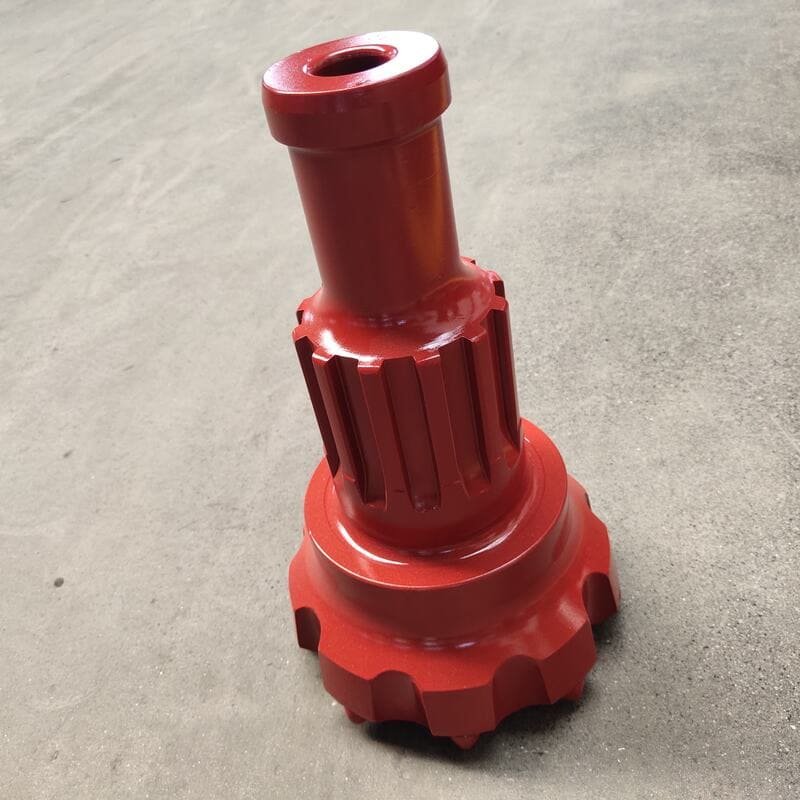
Understanding the Causes of Underfeeding
Underfeeding in DTH drilling has been one of those recurring challenges I've faced when the drill bit just doesn't get enough force to break through the rock. Trust me, nothing slows things down more than a bit that's not biting. This can often happen due to improper equipment settings19 or if the team isn’t fully up to speed with the latest techniques. I've found that pinpointing these issues early helps us correct them quickly.
| Cause | Impact |
|---|---|
| Improper Calibration | Reduced penetration and increased wear |
| Inadequate Training | Inefficient drilling techniques |
| Equipment Wear | Irregular bit engagement |
Ensuring Proper Equipment Calibration
Regularly calibrating our equipment is something I can't stress enough. We follow manufacturer guidelines20 meticulously to make sure our settings match the geological conditions we're dealing with. This isn't just a one-time thing; we perform checks regularly using the right tools to avoid surprises.
Regular Maintenance Practices
Keeping up with maintenance is like brushing your teeth—skip it, and you'll regret it! I've seen firsthand how staying on top of replacing worn parts keeps everything running smoothly. Setting up a solid maintenance schedule helps us catch wear and tear early.
Operator Training and Best Practices
Training is key, and it's something I invest in heavily for my team. Making sure everyone knows how to tweak feed force based on rock hardness is crucial. We regularly hold workshops to introduce advanced techniques and tools, making sure our operators are familiar with advanced drilling technologies21.
A feedback system where operators can report any irregularities has also been invaluable. It helps us catch and address underfeeding issues before they escalate.
Monitoring and Feedback Systems
Using monitoring systems has revolutionized how we operate by providing real-time data on drilling activities. It’s like having an extra set of eyes that alert us to deviations in feed force, allowing us to make quick adjustments. Investing in advanced monitoring technology22 has enhanced our operational oversight significantly.
By understanding these causes and implementing preventive strategies, I’ve seen a noticeable improvement in drilling efficiency and a reduction in costs associated with underfeeding in DTH drilling. It’s all about staying proactive and informed.
Improper calibration increases drill bit wear.True
Incorrect settings lead to reduced penetration and increased wear.
Operator training has no impact on underfeeding.False
Proper training ensures effective drilling techniques, reducing underfeeding.
Conclusion
Underfeeding during DTH drilling leads to inefficiencies, increased bit wear, poor hole quality, higher operational costs, and safety risks. Proper feed force is essential for effective drilling operations.
-
Exploring this link provides insights into how underfeeding increases fuel usage, affecting overall operational costs. ↩
-
Discovering the causes of premature failure can help implement measures to extend bit life. ↩
-
Understanding hole deviation aids in recognizing its impact on project precision and subsequent tasks. ↩
-
This link explains how drilling speed directly influences project timelines, offering strategies for optimization. ↩
-
Link explores how underfeeding increases resource usage, providing methods to optimize consumption. ↩
-
Learn about equipment failure risks and preventive measures due to underfeeding. ↩
-
Explore how irregular wear patterns contribute to early bit failure, impacting operational efficiency. ↩
-
Learn about best practices that prevent underfeeding, enhancing drill performance and longevity. ↩
-
Discover technologies that adapt feed rates dynamically to optimize bit performance and longevity. ↩
-
Learn methods to enhance drilling efficiency, saving time and costs. ↩
-
Understand wear patterns to prolong drill bit life and reduce costs. ↩
-
Discover strategies for maintaining optimal feed force during drilling. ↩
-
Checking equipment for wear ensures timely maintenance, preventing costly breakdowns. ↩
-
Understanding feed force helps optimize drilling processes, reducing unnecessary operational costs. ↩
-
This link explores how irregular wear can compromise drilling efficiency and increase maintenance needs. ↩
-
Understanding causes of deviation helps prevent accidents by maintaining proper feed force. ↩
-
Learning about accidents caused by underfeeding can help implement better safety measures. ↩
-
Explore how insufficient feed force affects safety to enhance operational protocols. ↩
-
Explore this link for detailed guidance on equipment calibration, ensuring optimal performance and preventing underfeeding. ↩
-
Manufacturer guidelines provide essential insights into setting correct parameters for efficient drilling operations. ↩
-
Learn about the latest technologies in DTH drilling that improve efficiency and operator effectiveness. ↩
-
Discover how advanced monitoring systems can enhance operational oversight and prevent underfeeding. ↩

